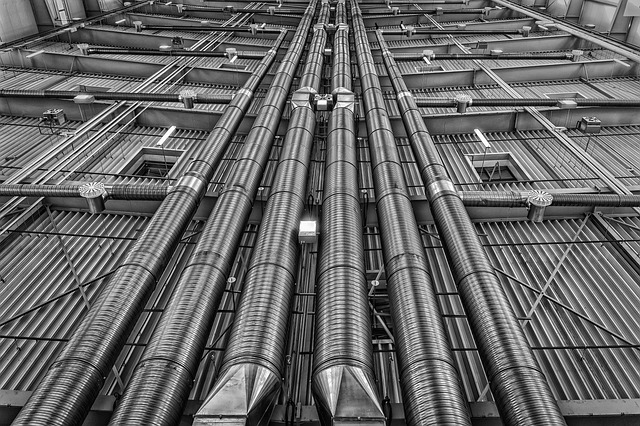Commercial air doors are advanced entrance barriers that optimize climate control, regulate people and vehicle flow, and enhance operational efficiency in businesses like warehouses and retail stores. These energy-efficient solutions offer remote control capabilities for precise temperature, humidity, and airflow adjustments, improving convenience and security. Heated air doors provide comfort and cost savings, while smart air doors, integrating IoT and motion sensors, promise to revolutionize access management with automated climate control and enhanced security.
Remote-controlled commercial air doors are transforming access management, offering unparalleled convenience and security. This article delves into the world of these innovative solutions, exploring their role, benefits, and the significant evolution they bring to facility management. We examine why remote control is a game-changer across various industries, highlighting advantages, implementation considerations, and future trends with smart air doors. Discover how these technologies are revolutionizing access control and enhancing operational efficiency.
- Understanding Commercial Air Doors: Their Role and Benefits
- The Evolution of Access Management: Why Remote Control is a Game-Changer
- Advantages of Remote-Controlled Commercial Air Doors in Various Industries
- Implementing Remote Access: Installation, Maintenance, and Security Considerations
- Future Trends: Smart Air Doors and Their Impact on Facility Management
Understanding Commercial Air Doors: Their Role and Benefits

Commercial air doors play a pivotal role in access management for various business establishments. These sophisticated entrance air barriers act as a robust first line of defense, controlling the flow of people and vehicles while ensuring optimal climate control. By integrating them into commercial door systems, businesses can enjoy enhanced security and energy efficiency.
Beyond temperature regulation, these innovative solutions offer improved operational efficiency, especially in warehouse and retail settings. Heated air doors, for instance, provide a comfortable interior environment by blocking cold outside air during winters, while HVAC air curtains ensure optimal ventilation and reduce energy wastage. As industrial entrance solutions, they contribute to sustainable practices by facilitating climate control doors, thereby enhancing the overall functionality of commercial entrance technology.
The Evolution of Access Management: Why Remote Control is a Game-Changer

The evolution of access management has seen a significant shift from traditional mechanical locks and keys to sophisticated digital security systems. This transformation is driven by the need for enhanced security, increased convenience, and improved operational efficiency, especially in commercial settings. Remote-controlled commercial air doors are a prime example of this evolution, offering game-changing benefits for businesses across various industries.
Commercial air doors, or entrance air barriers, have emerged as powerful tools in managing indoor environments. They serve as energy-efficient solutions by controlling the exchange of outdoor and indoor air, thereby maintaining climate control and minimizing HVAC load. Unlike traditional door systems, these remote-controlled variants allow for precise adjustments to temperature, humidity, and airflow from a distance. This feature is particularly beneficial in large warehouses, retail spaces, or industrial facilities where managing access requires a delicate balance between security and environmental control. With the ability to remotely operate these doors, businesses can streamline their entrance protocols, ensuring only authorized personnel enter while maintaining optimal indoor conditions—a far cry from the challenges posed by manual, time-consuming processes.
Advantages of Remote-Controlled Commercial Air Doors in Various Industries

Remote-controlled commercial air doors offer a multitude of advantages across various industries. They serve as effective entrance air barriers, significantly enhancing energy efficiency and climate control. By regulating the flow of air, these commercial door systems help maintain optimal indoor temperatures, reducing energy consumption and operational costs. This is particularly beneficial in environments like warehouses where warehouse door heating and HVAC air curtains are essential for maintaining a comfortable and productive workspace.
Moreover, remote control functionality adds a layer of convenience and security to these commercial entrance solutions. It allows for easy access management, enabling businesses to grant or revoke entry permissions remotely. This is invaluable in retail settings where retail air barriers must be secure yet quick to operate during peak hours. The integration of heated air doors further improves customer experience by providing a comfortable passageway, making them ideal for year-round use regardless of outdoor conditions.
Implementing Remote Access: Installation, Maintenance, and Security Considerations

Implementing remote access for commercial air doors offers immense convenience and enhanced security for businesses. During installation, professionals carefully integrate these advanced door systems into existing structures, ensuring seamless functionality with minimal disruption. Regular maintenance is crucial to preserve optimal performance; this includes routine inspections, cleaning, and calibrations. By prioritizing these practices, facility managers can guarantee the longevity of their commercial door systems.
Security remains a top concern when adopting remote-controlled access. Advanced encryption protocols must be implemented to protect communication between controllers and doors. Moreover, integrating these air barriers with existing security networks allows for centralized monitoring and control, enhancing overall safety. Energy-efficient features in commercial air doors not only reduce operational costs but also contribute to a more sustainable environment, making them an attractive choice for modern businesses.
Future Trends: Smart Air Doors and Their Impact on Facility Management

The future of commercial access management is set to be revolutionized by smart air doors, a natural evolution from the current trend of remote-controlled solutions. These innovative doors are poised to bring about significant changes in facility management, offering enhanced security, improved energy efficiency, and better climate control. By integrating advanced technologies such as IoT (Internet of Things) connectivity, motion sensors, and customizable control options, smart air doors can adapt to various environments and specific needs.
Imagine commercial entrance air barriers that automatically adjust settings based on the time of day, weather conditions, or even traffic patterns. Energy-efficient barriers equipped with intelligent heating and cooling mechanisms can maintain optimal indoor climate while minimizing HVAC energy consumption. Retail stores, warehouses, and industrial sites can all benefit from these smart door systems, ensuring a comfortable, secure, and efficient working environment. Heated air doors in particular are set to become popular choices for cold climates or areas requiring enhanced security with strict temperature control.
Remote-controlled commercial air doors are transforming access management, offering enhanced security, convenience, and efficiency across diverse industries. As technology advances, smart air doors will likely become even more integrated into facility management, promising a future with streamlined operations and improved safety. By embracing these innovations, businesses can ensure secure and seamless entry for employees and visitors alike.






